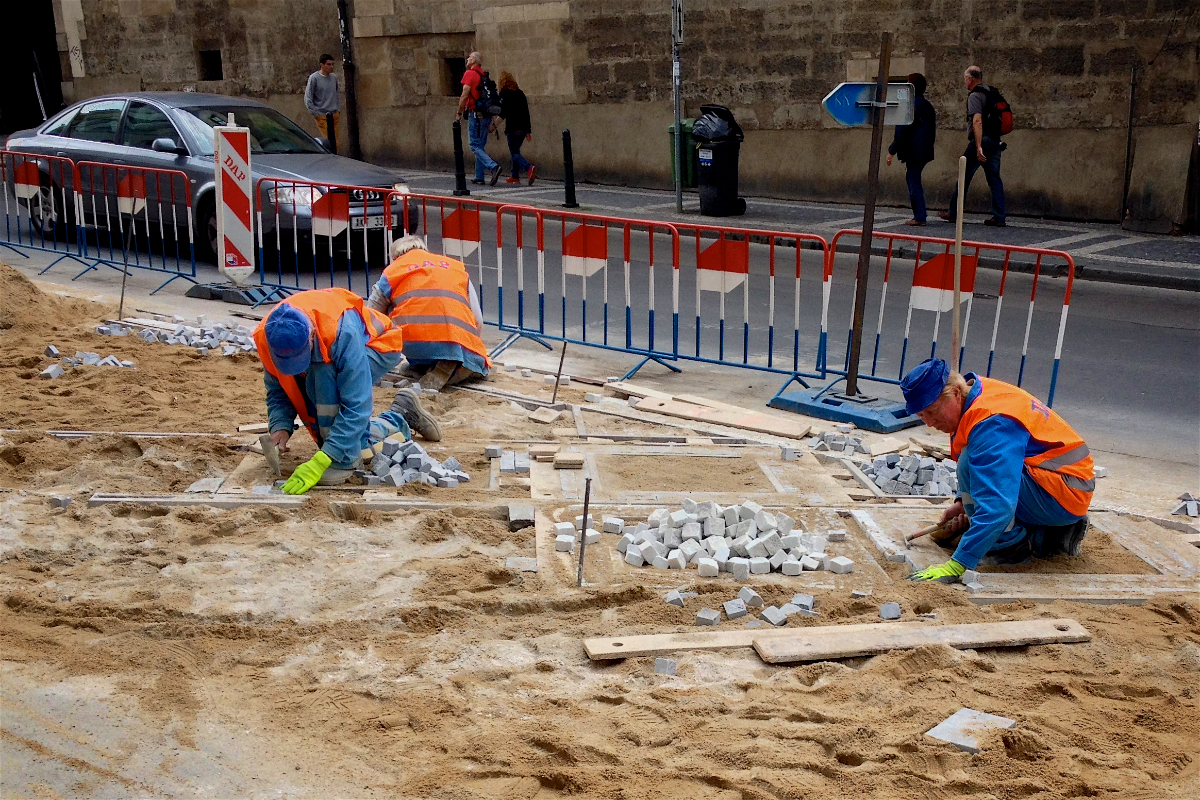Prague: An Adventure in Space and Time

Prague Castle and St. Vitus Cathedral viewed from the Charles Bridge
Comparing a city with those previously visited might not be the best means of appraisal, but that’s what I found myself doing during a three-night stay in Prague. Finding resemblances to other cities became a favourite activity: graffitied walls reminiscent of Rome; subways a reminder of my recent visit to Berlin. I even saw glimpses of cities beyond Europe: Municipal House reminded me of Melbourne’s Flinders Street Station (a similarity only enhanced by trams rattling nearby).
With the Czech Republic located in Central Europe, formerly a constituent of the Holy Roman Empire, and having endured almost 50 years of Communist rule, an eclectic mix of influences was particularly evident in the city’s architecture. I saw Brutalist office blocks sat alongside Art Deco shopping arcades, Baroque churches lying in the shadow of Gothic towers, Art Nouveau civic buildings butting up against Medieval gateways. Elsewhere, streets were lined with rows of four or five story buildings, many brightly coloured, others decorated with either intricate tile work or murals. Prague is literally a very colourful city.
Seeing streets populated with multinational companies is a common experience, and while Prague has no shortage of McDonald’s and Starbucks, the city was not as saturated with American chains as you might expect. However, established British brands like Debenhams, Tesco, Marks & Spencer and Costa Coffee were ever present, and only served to increase my general sense of displacement; I would love to know why so many British companies choose to operate in the Czech Republic.

Construction workers laying a new pavement
Walking along black and white tiled pavements bought back memories of similar surfaces seen in Brazil. On streets with greater footfall, my shoes would quietly squeak as I stepped on their polished surface. Constructing such pavements must take a considerable amount of time, and can only reflect a wider commitment to beauty and detail. In Britain pavements are often constructed using large concrete slabs – even when patterned brickwork is used, it’s a matter of time before parts are replaced with patches of tarmac.
If my sense of location wasn’t already confused, crossing the Charles Bridge from the Old Town to Lesser Town had the effect of transporting me in time, too. On this northern bank of the Vltava river can be found the stunning 13th century St. Vitus Cathedral, situated within the elevated grounds of Prague Castle. Atop the nearby Petřín slope can be found a lookout tower built for the Prague Jubilee Exhibition of 1891. Its design was influenced by that of the Eiffel Tower, and while its height above sea level is greater than that of its Parisian cousin, it’s considerably shorter. Climbing to the top – which swayed slightly even with a light breeze – meant I maintained my commitment to climbing tall buildings, sweaty hands and dizzying mind be damned! Further along the river, on the eastern fringes of Letná Park park, I found Czechoslovakia’s award-winning pavilion from the Expo 58 in Brussels, now sadly closed to the public.
In retrospect, that Prague should feature such a cross section of architectural styles and resemble other capitals shouldn’t have been surprising, but this was the impression I left with. As I travel onwards to Budapest, another capital sat astride a river, I’m sure such comparisons will continue.